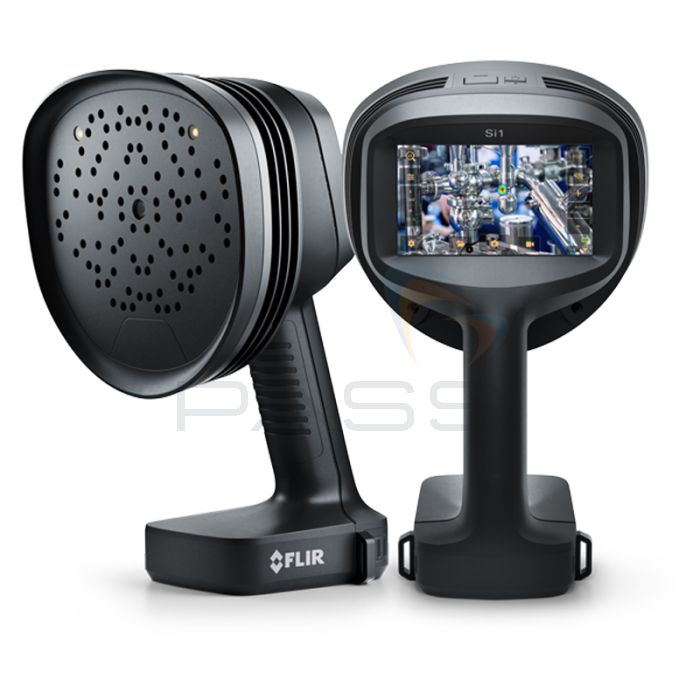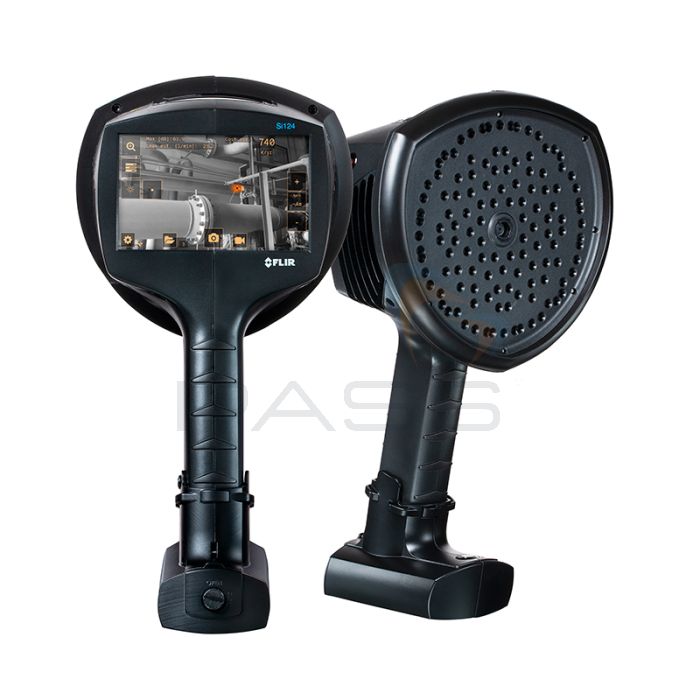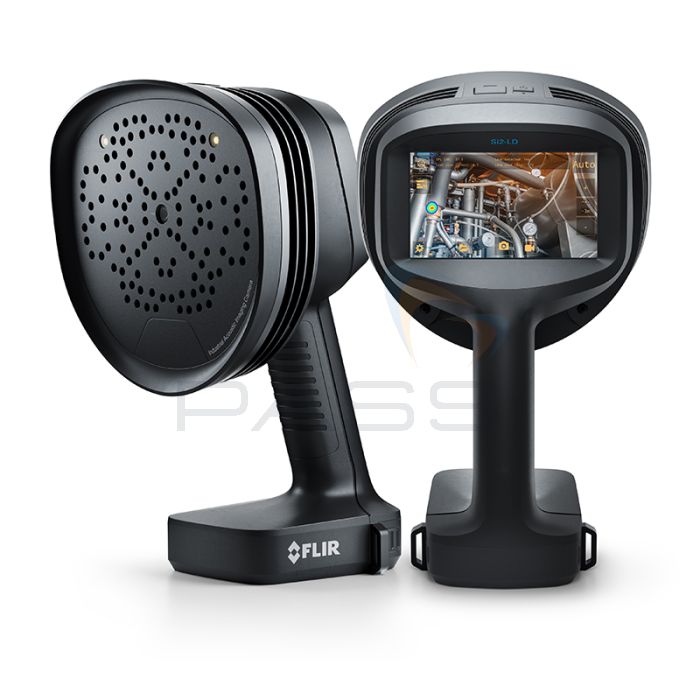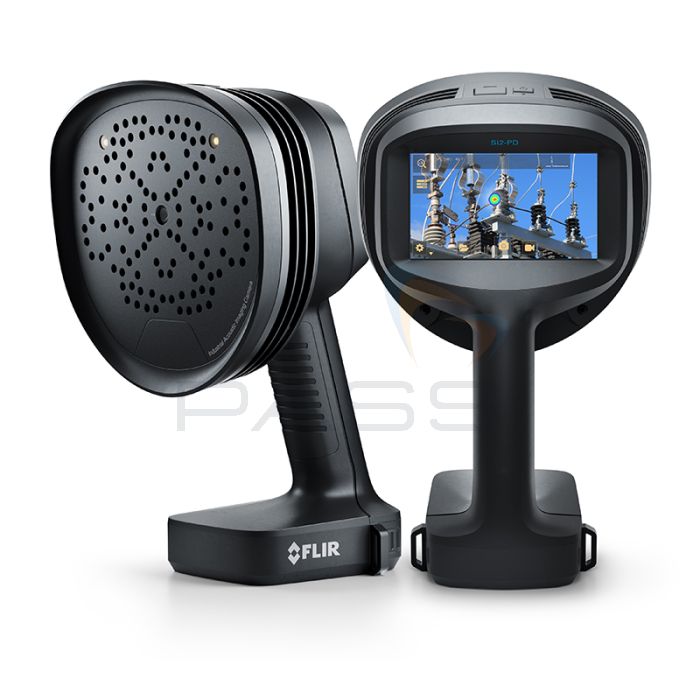
It seems like there isn’t a week that goes by without some manufacturer somewhere bringing out another acoustic imaging camera. Having said that, FLIR’s new model, the Si1-LD, is different. At half the price of the FLIR Si2-LD, it is equipped with 23% fewer microphones; has shortened its detection distance by 35%; and narrowed its frequency range by 23% (all compared to the Si2-LD); yet it still guarantees the same great return on investment (ROI). Obviously, we thought that sounded too good to be true, so we called Jason Cargil, FLIR’s Technical Sales Specialist, to the PASS Presents studio to prove it.
Quick Links
- PASS Presents the NEW FLIR Si1-LD Acoustic Camera
- Presenting the FLIR Si1-LD Acoustic Camera
- Presenting FLIR’s Si-Series of Acoustic Imaging Cameras
- Tune In to PASS Presents
- Further Information
PASS Presents the NEW FLIR Si1-LD Acoustic Camera
Equipped with just 96 MEMS microphones, a 2-100 kHz frequency range, and 130m maximum detection distance, the FLIR Si1-LD Acoustic Imager, at half the price of the Si2-LD, promises an ROI that’s just as good, if not better! Consequently, the FLIR Si1-LD could revolutionise facilities maintenance, saving businesses thousands on their energy bills through quick and easy compressed air leak location and assessment; especially as the US Department of Energy estimates that industrial plants lose 20% of their compressed air capacity through leaks. New Zealand’s government puts this loss higher at 30-50%, while some independent leak auditors report losses of 80%.[1] However, all this depends on the Si1-LD Acoustic Camera delivering on all that FLIR claims. To get to the bottom of how ground-breaking the FLIR Si1-LD actually is, PASS Presents interviewed Jason Cargil, FLIR’s Technical Sales Specialist. Discover what he had to say about the FLIR Si1-LD Acoustic Camera’s accuracy, ease of use, and ROI.
See Compressed Air Leaks with FLIR Si1 Acoustic Imaging Camera
Please don’t be afraid to like or share this video with anyone you think might be interested, as it helps our channel grow and reach people looking for advice. Plus, if you have a question or topic that you would like us to cover, then please do leave us a message in the comments, on social media (Facebook, Twitter, Instagram, or LinkedIn), or via our online form.
Presenting the FLIR Si1-LD Acoustic Camera

FLIR Si1-LD Acoustic Camera
- Ultrasonic camera for locating compressed air and vacuum leaks
- 96 MEMS microphones
- Advanced imaging algorithms
- Frequency range: 2-100 kHz
- 130m detection range
- 12MP digital camera
- Band-pass filter for frequency tuning
- Noise suppression technology
- Leak analysis quantifies leak rates and costs
- Compatible with FLIR Thermal Studio Suite
- Transfer images via a memory stick or USB data cable
- Lightweight
- Intuitive interface
- Optimised for single-handed operation
- Enables easy, efficient inspections across large facilities
- Leak detection in manufacturing and process industries
- Preventive maintenance
- Equipment optimisation
- Optimise systems for energy efficiency
- Ensure regulation compliance
- Highly sensitive, extremely efficient, and very easy-to-use ultrasonic leak detector
- Will help facilities reduce their carbon footprint and energy expenses
Presenting FLIR’s Si-Series of Acoustic Imaging Cameras
Tune In to PASS Presents
At PASS Presents, we want to help you make informed test equipment decisions that improve your work life. Short in format and varied in topic, PASS Presents can be enjoyed as a video or a podcast. Tune in while working or on your lunch break and remember to subscribe so you never miss an important development.
Further Information
For additional details about FLIR’s Si1-LD Acoustic Camera, please contact our Sales team on 01642 931 329 or via our online form.
In the meantime, you can find more information about the FLIR Si1-LD Acoustic Camera and all FLIR’s Si-Series Acoustic Imagers on our website, tester.co.uk
Read More About the FLIR Si1-LD Acoustic Camera
Read More About the FLIR Si-Series Acoustic Imaging Cameras
For further advice about FLIR’s Si Series, please consult our plethora of guides and case studies.
- PASS Presents the NEW FLIR Si2 Acoustic Camera: One Simple Tool to Save You THOUSANDS
- Conquering Compressed Air Leaks: Seeing Sound & Saving Money with FLIR’s Si-Series Acoustic Cameras
- Teledyne FLIR Si124 Acoustic Imager Improves Productivity at Pharmaceutical Plant
- Teledyne FLIR Si124 Acoustic Imager Application Scenario: Condition Monitoring in Pulp & Paper Mills
- 6 Things to Consider Before Buying an Acoustic Camera
- Keeping the Lights On and Preventing Failures with the FLIR Si124
- Acoustic Imaging Saves up to 90% in Inspection Time
Footnotes
[1] Statistics sourced from:
- Fluke, Hidden profits found in quick detection of compressed air, gas and vacuum leaks, last accessed 27 May 2025.
- Rob Marshall, Protect Profits with Compressed Air Leakage Best Practices, last accessed 27 May 2025.






